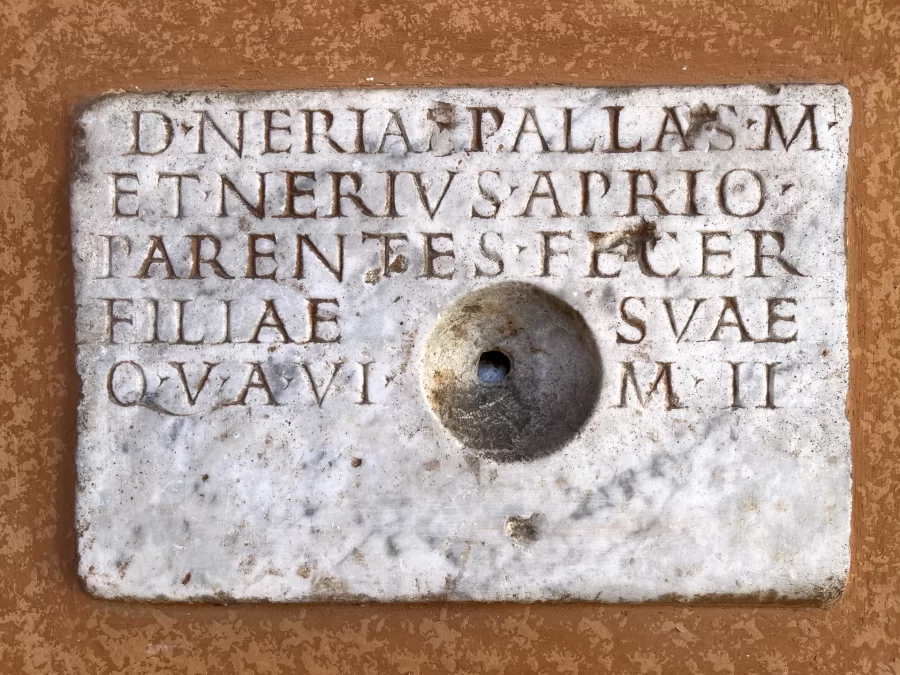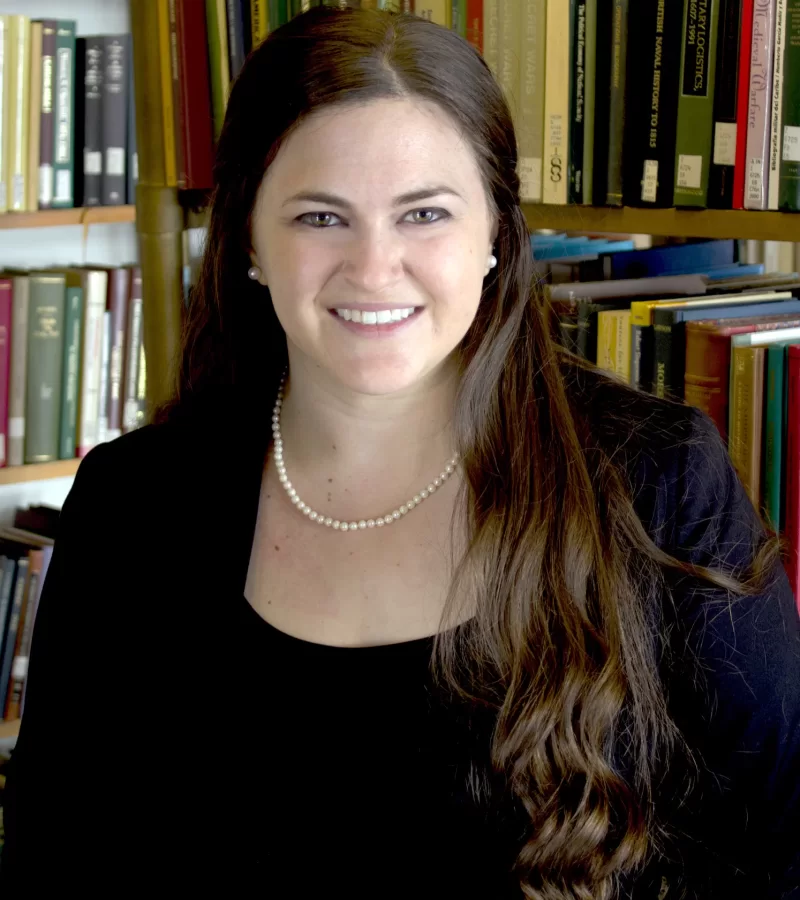Assistant Professor of Classical and Medieval Studies, Liana Brent examines Roman funerary rituals in a new paper.
In a new article in Memoirs of the American Academy in Rome, “Drinking with the Dead: Libation Conduits from Rome’s Columbaria to the Cortile at the American Academy in Rome,” Liana examines ancient Roman funeral customs which allowed the Romans to maintain connections to their deceased loved ones through rituals involving the offerings of food and drink. Liana focuses on libation conduits, special channels carved into marble epitaphs, known to modern scholars as infundibula, which have not been well studied to date. These conduits provided a means for liquids, like wine and water, to be poured directly into the tombs, which allowed the living to symbolically share a meal with their loved ones. Such a practice honored the deceased while maintaining a sense of continuity between the living and the afterlife. Liana notes that, “Such commemorative strategies were especially prominent among the non-elite, for whom the perpetuation of memory was of special concern.”

Liana is a field archaeologist who excavates a Roman cemetery in southeast Italy. Her research has appeared in the Journal of Roman Archaeology, Proceedings of the Theoretical Roman Archaeology Conference, the Memoirs of the American Academy in Rome, and in various edited volumes. She is currently working on a monograph, Corporeal Connections in Roman Burial Practices, which explores ongoing interactions between the living and the dead in Roman Italy.
Brent, L. “Drinking with the Dead: Libation Conduits from Rome’s Columbaria to the Cortile at the American Academy in Rome.” Memoirs of the American Academy in Rome vol. 69 (Fall 2024).

